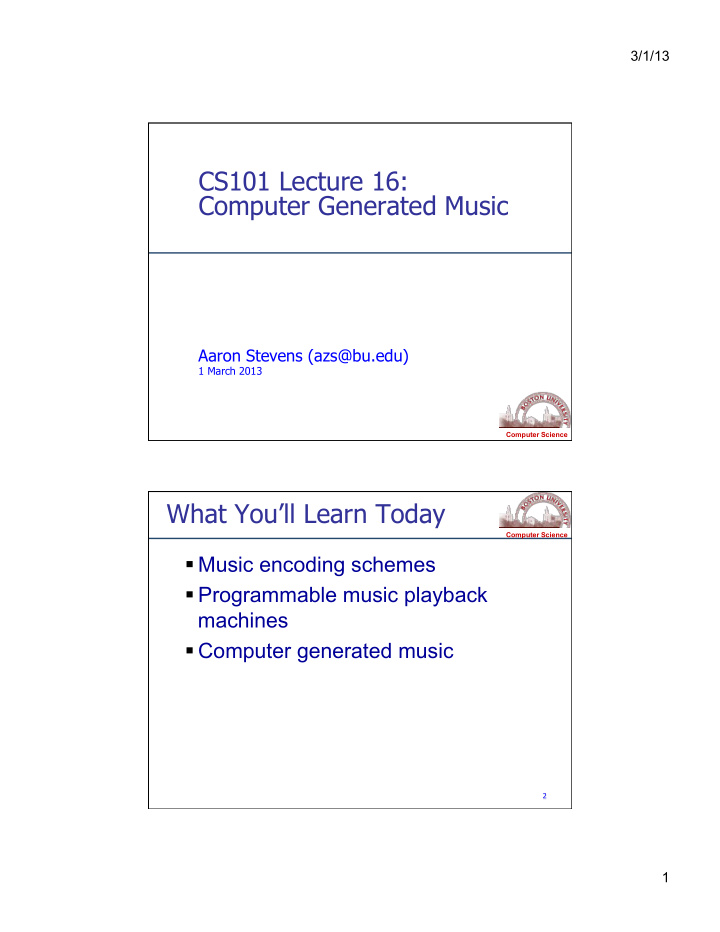



3/1/13 CS101 Lecture 16: Computer Generated Music Aaron Stevens (azs@bu.edu) 1 March 2013 Computer Science What You’ll Learn Today Computer Science Music encoding schemes Programmable music playback machines Computer generated music 2 1
3/1/13 Other Ways to Represent Music: Computer Science How does a music box work? Computer Science 2
3/1/13 What about a player piano? Computer Science BU’s John R. Silber Organ Computer Science http://www.bu.edu/today/2011/icons-among-us-the-john-r-silber-symphonic-organ/ http://www.bu.edu/buniverse/view/?v=1FTkaLbT 3
3/1/13 Musical Instrument Digital Interface Computer Science The MIDI protocol provides a way to specify music as instructions. What kind of computer instructions do we need to explain this sound? (play a few seconds of the song “ Thunderstruck ” ) Musical Instrument Digital Interface Computer Science Each MIDI instruction ( “ event ” ) specifies: – timestamp – action, for example: NoteOn, NoteOff – note, for example: 59 is B, 63 is D#. – velocity (volume) 4
3/1/13 MIDI Note Numbers Computer Science SOURCE: http://www.harmony-central.com/MIDI/Doc/table2.html Anvil Studio (free software) Computer Science 5
3/1/13 Why use MIDI? Computer Science Writing instructions takes a lot less space than sampling the waveforms: 53,000 / 7,000,000 = 0.007 data ratio, better than 99% savings. When should we use MIDI? Compare sampled vs. MIDI to raster vs. vector graphics Computer Science The same is true for sampled music vs. MIDI. 6
3/1/13 What You Learned Today Computer Science Music notation Music playback machines MIDI - encoding 13 Announcements and To Do Computer Science Readings: Wong ch 4, pp 102-117 (today) Reed ch 3, pp44-50 (for Monday) HW 7 due Wednesday 3/6 QUIZ 3 will be on Friday 3/8 HTML forms, CSS, frames, images, audio 14 7
Recommend
More recommend